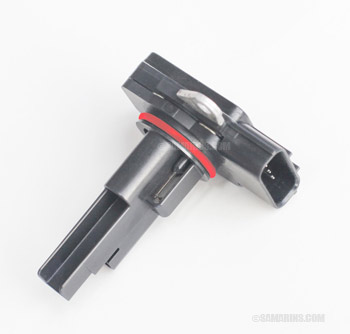P0300 - Random Cylinder Misfire. Causes, common problems, diagnostic
July 18, 2021
The code P0300 stands for random misfire. That means that multiple cylinders misfire at random.Can you drive with the code P0300? Driving with a misfiring engine can cause more damage. When a cylinder misfires, unburned gasoline can overheat and melt the catalytic converter, which is an expensive part of the emission control system.
Some manufacturers advise not to drive with a misfiring engine; others recommend driving only in a very moderate fashion and having your vehicle checked out as soon as possible. See your owner's manual for details.
Symptoms of the code p0300
When there is a random misfire, the engine will run rough. Depending on the cause, it could be more noticeably at idle or higher RPMs.What can cause the code P0300 - Random cylinder misfire:
- Bad mass airflow sensor.- Ripped intake air snorkel
- Stuck-open EGR valve or purge valve (solenoid)
- Carbon build up on valves and injectors (common in engines with Direct Injection)
- Vacuum leaks. - Worn valve train components
- Low fuel pressure
- Improperly set valve timing
- Clogged catalytic converter
- Problems with the crankshaft position sensor (CKP) or camshaft position sensor (CMP)
Often the random misfire code P0300 shows up together with other codes, for example, P0171, P0101, P0102, P0420 and P0401. In this case, the accompanied code has to be diagnosed first.
Common problems causing the code P0300 - Random cylinder misfire:
Advertisement
Vacuum leaks, as well as a stuck-open EGR valve or purge valve (solenoid) can cause misfire that mostly happens at idle, but goes away at higher rpms. Read more: Vacuum leaks: common sources, symptoms, repairs.
In some older Honda vehicles misfiring can be caused by valves being out of adjustment. Misfiring could be more noticeable when the engine idles after a cold start. As the valve train components wear, the valve gaps change; to compensate, the valves in many Honda engines need to be adjusted at recommended intervals.
Sometimes, the engine could misfire if during the timing belt or chain replacement, the timing hasn't been set properly. If the problem started after replacing a timing belt or chain, checking the timing is the first thing to do.
How the code P0300 - Random cylinder misfire is diagnosed
The short term fuel trim (STFT) and long term fuel trim (LTFT) need to be checked with a scan tool to see if the air/fuel mixture is not too lean. Often a bad mass air flow sensor causes the engine to run lean causing random misfire. Read more about the STFT and LTFT fuel trims here. The engine might need to be checked for vacuum leaks. Read more: Vacuum leaks: common sources, symptoms, repairs. If a clogged-up catalytic is suspected, the exhaust backpressure must be checked. One of the symptoms of a clogged up catalytic converter is when the car starts and runs OK at idle, but bogs down when revved.If misfire happens only at idle, the EGR valve and purge valve need to be checked, as either one could be stuck open.
Faulty valve train components such as worn camshaft lobes, collapsed lifters, bad rocker arms or stretched timing chain can also cause the engine to misfire.
Once the problem is repaired or no longer detected, the misfiring code will clear itself after some driving.
Additional trouble codes can shed some light on the cause
Additional OBDII codes that are present along with misfire codes can shed some light on the cause. For example, if you have the P0300 code along with P0171 - System too lean, there is a good chance that the misfire is caused by the lean air/fuel mixture that initially triggered the code P0171.Once the problem caused the code P0171 is fixed, the misfiring will likely go away too. Another example, if you have the code P0401 - EGR insufficient flow along with the P0300, the EGR (Exhaust Gas Recirculation) system needs to be checked first.

